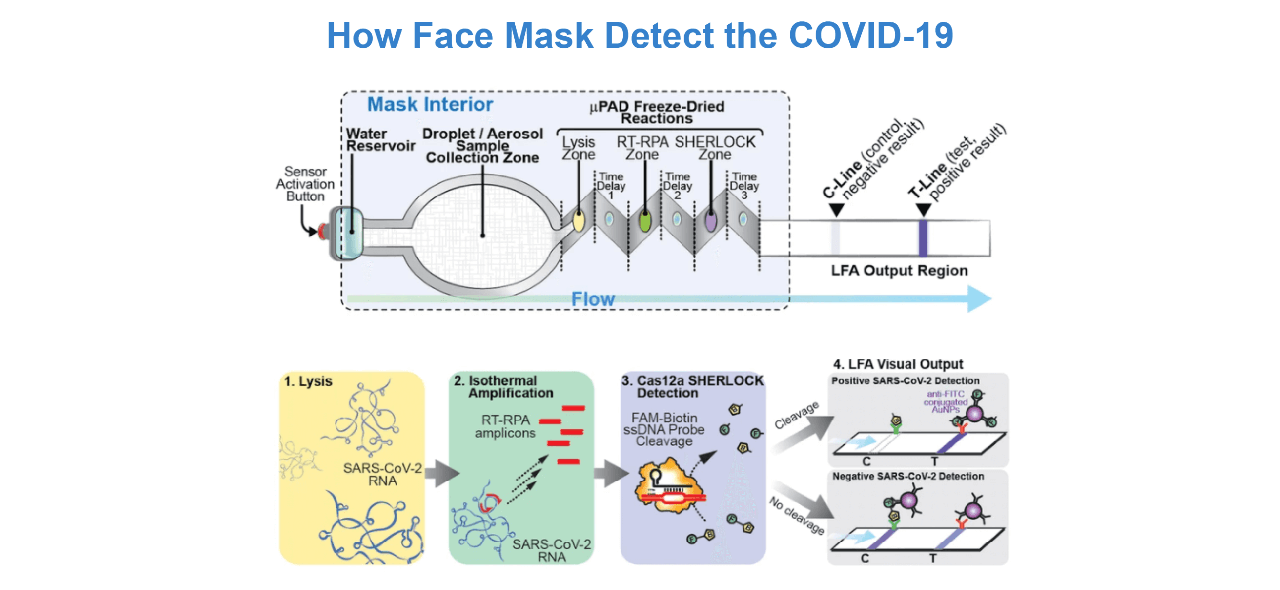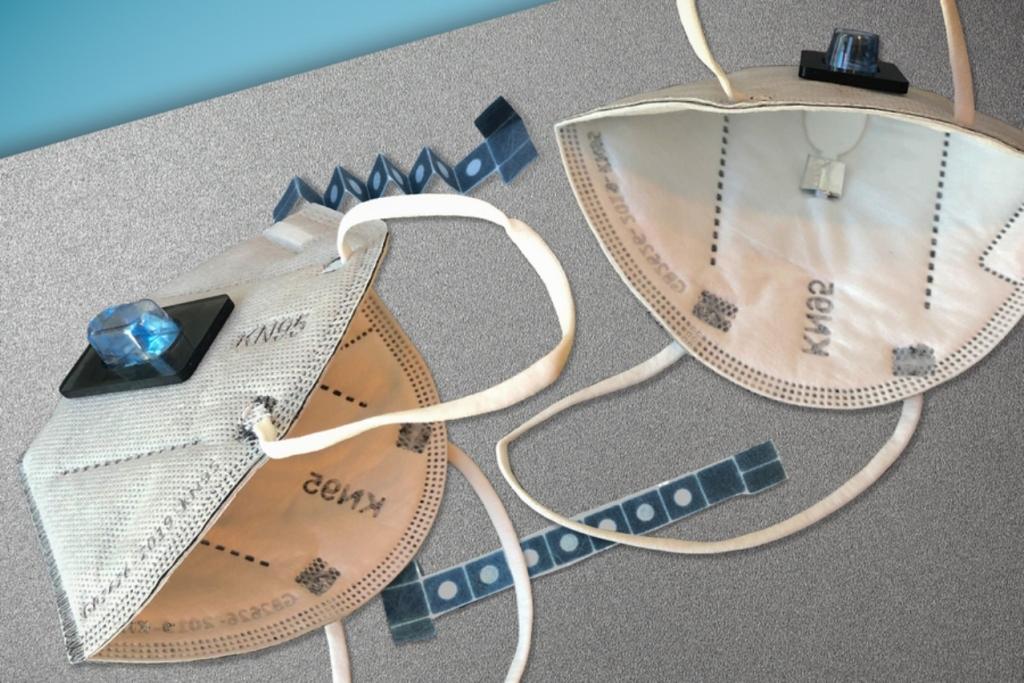We live in an advanced era of science and technology that have solved many problems in humans life. Recently, researchers from MIT and Harvard University developed a face mask that detects COVID-19. It’s a great example of a science and technology combination that will save people’s life very soon.
How will a face mask detect the COVID-19?
Peter Nguyen, a researcher scientist at Wyss Institute (Harvard), developed a mask to detect COVID-19. The face mask has biosensors that detect the pathogens of SARS-CoV-2 with other toxins and alert the user. It will show the result with high accuracy in 90 minutes compared to the standard nucleic acid-based diagnostic tests.
“We have essentially shrunk an entire diagnostic laboratory down into a small, synthetic biology-based sensor that works with any face mask and combines the high accuracy of PCR tests with the speed and low cost of antigen tests,” said Peter Nguyen.
The biosensors are based on previously developed freeze-dried cell-free (wFDCF). It was used as paper diagnostics to detect Ebola and Zika viruses in the past. Researchers tested sensors with a face mask, lab coats and other clothes for future use. And it seems the possible way to monitor health care workers and other priority workers in future for COVID-19.

Diagram Source: Nature.com
The researcher’s diagram shows that it has a button to release the water from the reservoir. Then it will analyse the droplets from the wearer’s breath by hydrating freeze-dried molecules in the sensor. The test further passes through various zones like Lysis, RT-RPA and SHERLOCK zone. Finally, the paper strip registers the positive or negative results for SARS-CoV-2, known as COVID-19.
According to the researchers, the result accuracy is very high compared to the current Gold Standard RT-PCR test. It can operate at room temperature and allows rapid screening anywhere for a quick diagnose.
What are the possibilities for these new biosensors that detect the COVID-19?
The successful test of COVID-19 detection, along with Ebola and Zika, opens lots of other possibilities. Researching team further testing with various clothes types to monitor COVID-19 and alert the user. It could get integrated with the COVID-19 contact tracing mobile app in future that helps to identify and alert for safety. However, other prototypes developed with fibre optic technology to monitor and send sensor data to the Smartphone app.

Image Source: MIT
In future, you might see combinations of science and technology in day to day life. People will use gloves, glasses, shirts and more in future as wearable with COVID-19 detection technology. It will be more beneficial for essential workers industry like health care and schools. Indeed, biosensors going to used in military uniforms to help to identify the existence of dangerous or toxic pathogens.
Other possibilities are, monitoring massive areas like indoor playgrounds, public transports and more. The vast prospect of this biosensor-based virus detection technology is endless, and it can help many human beings in the future.
Final Thoughts:
COVID-19 has changed a lot in technology, and there are various types of masks available in the market. Razer smart RGB N95 face mask is one example, but it can’t detect COVID-19. So face mask developed by MIT and Harvard is far ahead in terms of technology and science.
The world is currently facing the global pandemic of COVID-19, and such innovation could save millions of people’s lives. Various ways of application of this biosensor will change the course of living till COVID-19 completely goes away.
In many countries, the COVID-19 test takes about 24 to 72 hours. Whereas this face mask detects COVID-19 in just 90 minutes with high accuracy is a phenomenal invention. They may start the mass production of such an innovative face mask sooner and make it available to the public at an affordable cost. Hopefully, local governments get involved in monitoring and distributing to the public. And may prepare some guidelines to distribute these face masks to help maximum citizens.